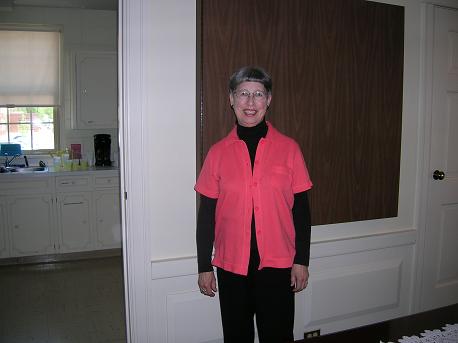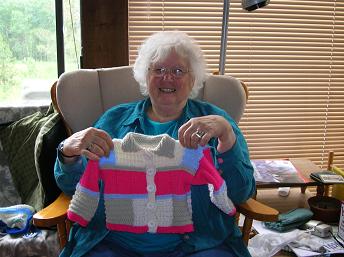by Tony Braida
The following blog was written by a good friend of Kim’s, Tony Braida, an international businessman, Regional Manager for an international business firm. He regularly travels to Latin America, Canada, and the Caribbean.
In my position, I use different languages. I speak six languages. Of course, English is my first language, the language I grew up speaking here in Iowa. My second language is Italian, which I learned from my elder relatives (aunts, uncles, and grandparents), who immigrated to the U.S. from Italy and spoke both Italian and Piemontese, a dialect1 from the Piedmont2 area of Italy. So I learned these languages at home and at family gatherings. I also speak Spanish, Portuguese, and some French.
I studied Spanish in high school, did well with it, and continued studying it during my years at Central College. In the early 1990’s I did graduate work in Rome, which was an ideal opportunity to expand3 my Italian vocabulary and grammar. I also quickly learned that our “regional” version of Italian4 had changed considerably since my family came to the United States. Much of the sentence structure, word use etc. that I was accustomed to5 was now considered overly formal and almost archaic6. I would be like the difference in English from a black and white movie of the 1920’s and released this year….very different! Finally I took a public education course7 in French, then basically taught myself, via8 travel to the French Caribbean and France, as well as reading and watching French language television. It is interesting to note that the Italian dialect, Piemontese9, is composed of nearly one-third French words. This made it easier to learn and converse10 in French.
Using other languages is important to me. During an average day in the office here in Iowa, I speak and write about 60% in Spanish, 30% in English, and, depending on the circumstances11, 10% in Italian or Portuguese. When I travel in Latin America12, nearly 100% of my conversation is in Spanish or Portuguese. I travel about 150 days a year, usually in five-day periods. I am fortunate in that I am able to fly first class on my trips since I have nearly five million kilometers on American Airlines, giving me elite status13. This makes long trips, like to Chile or Brazil, easier on my body. I also have the privilege14 of using special lounges15 provided by American Airlines and found at all major airports.
I first entered the international marketing field over 20 years ago and started traveling extensively. Now cultural differences are second nature to me. This may sound strange, but the Internet and globalization16 have indeed changed the way at least my business is done. It seems like more and more of my clients follow a 9-5 work schedule17 and communicate, order, and run their own businesses much like we run a business here in the U.S. or in Europe. Mexico is where my normal 9-5 schedule gets thrown out the window18. It is not uncommon to start the day with a breakfast meeting at 10:00, finish at noon, go to other meetings until lunch around 16:00, then back to work, with dinner sometimes nearing 22:00 or later. It makes for19 a very exhausting20 day!
I have been with my current company for over fifteen years now, where most of our customers (distributors21) are the same people I met on my first visit to them 15 years ago. It is not uncommon that they invite me to their home for dinner while I am in their country. Moreover, over the years I have helped many of them celebrate weddings, the birth of children, grandchildren, as well as mourned the death of their parents (sometimes even founders of the company and personal friends).
Even though I know them well, I rarely take gifts to clients, due to ethical reasons22. However, there are distributors who will ask me to pick up some thing for them in the U.S. and deliver it to them. These are usually items that are difficult to find in their country (DVD’s, Disney items for their children etc.) I seldom bring things home, though I still make an effort to bring home Japanese peanuts from Mexico because Kim loves these.
Finally, I impress some people with how fast I can pack for a week-long trip….ten minutes maximum. I have become a creature of habit. I usually take the same amount of clothes and items, depending on the season and where I’m traveling. I live by the mantra23 of “less is more.” In my opinion there is no reason for me to carry around one-half of my wardrobe24 while I’m traveling.
My important rule for any person involved in international business relations is The Golden Rule, “Do unto others as you would have them do unto you.25” In fact, I try to live by this rule every day of my life.
Notes.
1. dialect: a form of a language which is spoken only in one area, with words or grammar that are slightly different from other forms of the same language (方言).
2. Piedmont area: a mountainous area of northern Italy (Piedmont山区,位于意大利北部).
3. expand: make greater, enlarge (扩大,扩充).
4. “regional” version of Italian: 意大利语的地方变体/方言
5. accustomed to: familiar with, acquainted with (习惯于).
6. archaic: out of date, old fashioned (过时的,成就的).
7. public education course: a class offered to the general public in a city (为公众开设的课程).
8. via: by way of, through a certain way, by means of (通过,借助于).
9. Piemontese: a language dialect of the Piedmont area of Italy (意大利Piedmont 地区的方言).
10. converse: speak or discuss, have a conversation with (说,交谈).
11. circumstances: the conditions that affect a situation, action, event etc. (情况).
12. Latin America: the Spanish-Portuguese speaking part of the Americas, mostly Central and South America (拉丁美洲,美洲说西班牙和葡萄牙语的部分,大部分在中美洲和南美洲).
13. elite status: highest possible level for access to special favors from the airlines (贵宾身份,指可以乘坐商务舱或头等舱的乘客).
14. privilege: a special advantage that is given only to one person or group of people (特权).
15. special lounges: well provided places to rest and wait for boarding an airplane for a trip (贵宾候机室).
16. globalization: a situation in which something is considered on a worldwide basis (全球化).
17. a 9-5 work schedule: 朝九晚五的工作时间
18. “thrown out the window”: discarded (丢弃). In this case, it means all other schedules must be discarded to meet the Mexican schedule.
19. makes for: cause a particular result or situation (结果造成).
20. exhausting: very tiring, feeling of being worn out (非常疲劳的,筋疲力尽的).
21. distributors: a company or person that supplies shops and companies with goods (批发公司,批发商).
22. ethical reasons: 道德原因
23. mantra: something repeated again and again (不断重复的东西).
24. my wardrobe: the clothes that I have (我的全部服装).
25. “Do unto others as you would have them do unto you.”: 己所不欲,勿施于人。



 Our friend, Todd Onken, is a retired smokejumper
Our friend, Todd Onken, is a retired smokejumper pipes in this way. Sometimes all of the pipes are hidden behind a screen
pipes in this way. Sometimes all of the pipes are hidden behind a screen take organ lessons during the summer. The church was one mile (1.6 kilometers) from our home on a farm at the edge of our
take organ lessons during the summer. The church was one mile (1.6 kilometers) from our home on a farm at the edge of our  To the left is a photo of a modern organ that was built in Iowa by Dobson Pipe Organ Builders, Ltd. It is located in Grand Rapids, Michigan. You can see the large pipes at the front of the organ case
To the left is a photo of a modern organ that was built in Iowa by Dobson Pipe Organ Builders, Ltd. It is located in Grand Rapids, Michigan. You can see the large pipes at the front of the organ case
